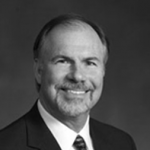
This guest blog is by ELGL member Jeff Hoye with CPS-HR Consulting.
 Does it feel like we’ve been talking about succession planning in the public sector forever? Consider the compelling case for succession planning.
Does it feel like we’ve been talking about succession planning in the public sector forever? Consider the compelling case for succession planning.
Beyond mandates that may require a succession plan for some government agencies, an effective succession plan:
- is one of the most useful tools to prevent interrupted operations when a key role in the organization becomes vacant;
- identifies and develops future leaders consistent with mission and strategic goals; and
- helps ensure this pool of future leaders feel seen, valued, and more willing to stay than move to another Agency to further develop their careers.
Let’s be honest. Everything you’ve just read, you already know. It’s 2019. This conversation has been happening for a good 15-20 years, or more.
By now, we should be way past just planning. We should be sharing leadership developmental tips and tricks.
The problem is a lack of skill and a lack of will.
Said differently, a lack of know-how and a lack of resources. Until we increase our know-how on this topic, it’s going to be difficult for anyone to invest in a true, succession planning program. Let’s define a succession planning program as a plan-in-action.
Over the last 30+ years of providing services to the public sector, we’ve seen trends, mandates, best practices and everything in between, and we’ve heard – and helped with – the gamut of questions about factors affecting us in HR. Today. What’s become clear to us a basic lack of understanding.
A Succession Plan is not the same as a Succession Planning Program
A succession plan is a document that usually describes what must be done and why. In our experience working with public sector agencies, only 30-40% have a succession plan.
We can break this into two levels: A succession planning document only, and a succession planning program.
The purpose of a succession planning document only – at the very least – is to meet a mandate to have a succession plan on file. In the best case, a succession plan only is a hope that action will take place.
On the other hand, a succession planning program is more than just a plan or hope to take action. A full program includes a plan to act, funding and creation of the program elements, actually running the annual process, and then follow-up at the end of the year to determine how to improve going into the next year.
The purpose of a succession planning program is to ensure continuity in critical leadership and key technical positions. This is what we commonly think of as Succession Planning.
Succession Planning is not the same as replacement planning
Succession planning is a proactive process that begins developing successors years in advance of when they’ll be needed. It accounts for the fact that eventually there will be changes in leadership in an organization. It’s an inevitability and by planning for such change, equips the organization to continue with their objectives and performance, virtually uninterrupted.
Reactive planning is just that, reactive. It’s planning to post the opening when the opening occurs and fill the position with either an internal candidate or an external candidate. Generally, with a reactive approach, the organization doesn’t seem to have a preference as to whether the replacement comes from within the organization or from outside. Sound a bit like no planning and perhaps a bit cavalier about filling key positions?
It’s hard to imagine anyone purposely opting for a reactive approach, right? It becomes even more obvious when you consider the effect on your employees and the true cost of a reactive approach.
Consider, your key leaders actively want to build their careers with you. So if you choose to bring someone in over them via an external recruitment, they will likely take on the mindset that they should look for an external leadership job outside of your organization.
It’s hard to keep morale, dedication, engagement, and ultimately, retention up when your employees may not see a solid future of growth for their career with the organization.
Next, think about the true cost of an external search. It’s not as simple as one might think to find the right fit from outside of the organization. Even in a simple organization, it takes anywhere from 2-3 years to (i) really learn what works (and why) and what doesn’t work (and why); (ii) to learn who the go-to people are in the organization; and (iii) what it takes to build a coalition of support for a budget, a large initiative or any other strategic effort.
The first step in gaining the understanding needed is clearing up misunderstandings in your Agency as to what succession planning is all about.
What’s needed next is knowing how to build a program that best serves your Agency.
The most successful succession planning programs typically follow these five steps:
Identify Key Positions
The primary task at this point is to identify the most critical future-oriented roles in the organization. It can be hard to narrow down, but giving this tough scrutiny will lay the proper foundation for your succession planning program.
Identify Succession Planning Participants
Next, identify the actual participants in the program through a transparent and competitive process. The identified participants are then formally invited to become members of your Key Talent Pool.
Develop the Program and Prepare the Participants
With the key positions and participants identified, it’s now time to set expectations for the participants about the program. Proper preparation allows participants to hit the ground running from the very first day. As a result of this process, you’re setting the stage.
- The incoming (or continuing) Succession Planning Program participants will understand:
- the demands the Program may have of them;
- the purpose and goals of your Succession Planning Program;
- what is expected of them during the course of the Program; and
- the pre-work that they will need to complete
- The Succession Planning Coordinator will be tasked to annually improve the Succession Planning Program based on input from participants and the succession planning oversight committee
- Delivering on a structured, communication strategy that will:
- Set expectations about what the succession plan is and what it isn’t; and
- Track and report progress during the program period to be shared with participants, the organization and key stakeholders
Provide Developmental Opportunities for Participants
At this phase, it’s time to start getting serious about setting your participants up for success! Identify and create developmental opportunities to prepare them to succeed in their current and future positions. This phase will result in:
Opportunities provided for each participant (typically in a group setting)
- To provide a common base of knowledge, skill, and ability across the Key Leadership Ranks
- To provide an opportunity for Program participants to get to better know their peers and learn to interact and collaborate in a leadership-focused setting
Opportunities provided on an individual basis linked to their developmental gaps
- To help the individual accelerate their learning beyond what would normally be acquired on a longer term basis such as time on the job
- To help the participant envision a career path supported by classes, mentors, and working with peers
Opportunities for participants to operate in fellow leader workgroups, utilizing their skills to achieve a desired outcome to benefit your organization
- To help the participant obtain needed, demonstrated abilities helpful to their future promotion
- To learn to work together, in cross-functional fashion, with other leaders, as needed when sitting in an executive role
Note: what’s often missed is the opportunity within this part of your program to actually pay for the annual developmental costs. Mature succession planning programs have learned to focus the annual group leadership project on a critical, important problem or opportunity the Agency seeks to address.
If chosen well, the ROI on the results of this succession planning team project will cover the costs of the developmental costs for a year. Further, the selection of the right project moves your leader learning from conceptual to real-world.
Monitor Individual and Program Progress and Acknowledge Achievement
Monitoring individual and program progress is important and provides for communication and modifications in future years as needed. This phase provides for tracking and accountability.
Individual Progress
- To provide a record of individual progression of a particular participant in a particular year
- To note whether they completed their plan (class, project, mentoring, etc.)
- To obtain a personal, brief Learnings Report from the participants that includes:
- What they specially learned that they believe will better position them for future promotion (the more specific the better)
Class Progress
- To provide how well the instructors rate the overall class in terms of participation
- To provide how well the class projects / class efforts succeeded
- To provide how well the instructor led courses were rated by the participants
Participant Satisfaction Survey
- To provide a baseline satisfaction score for future years regarding participant satisfaction
- To provide opportunities for learning and an ability to adjust at the end of the year. Areas of possible scoring:
- Pace of the Program
- Personal highlights of the year
- Suggestions for improving the Program
To sum it up, there is a reason why we’re still talking about succession planning after all these years – simply it’s an important piece of planning for an organization’s uninterrupted operations and continued success through the inevitable organizational changes, whether planned far in advance or occur spontaneously.
Isn’t it time to stop just talking about it, and start taking steps to resource an actionable plan?
For more information about succession planning, please contact Jeff Hoye at jhoye@cpshr.us.
About Jeff Hoye:
As Senior Practice Leader at CPS HR Consulting , Jeff is responsible for strategic planning, business development, product/service delivery and P&L responsibility. Jeff’s experience includes national and international experience in the areas of organizational strategy and development and large systems change, working with senior leadership teams, boards of directors and management utilizing various teaming structures and innovative strategies.
Jeff is a member of the International Public Management Association for Human Resources and certified as an executive coach and member of the Worldwide Association of Business Coaches.
He received his bachelor’s degrees in Finance and Accounting from the University of South Florida and his MBA with an emphasis in organizational behavior from the University of Colorado.
